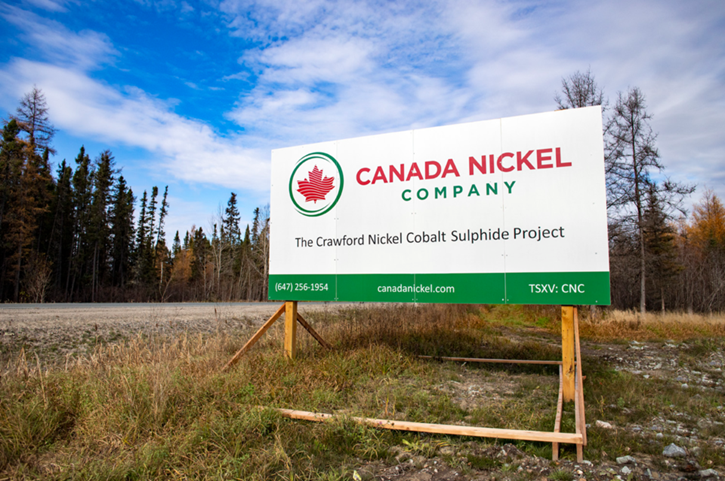Canada Nickel releases 4% nickel assay for sulphide intersection at Bannockburn


Canada Nickel Company (TSXV: CNC) (OTCQX: CNIKF) received assays for drillhole BAN24-18 which intersected 4.0 metres of massive sulphide within a disseminated sulphide-bearing peridotite at Bannockburn, one of the company's southern exploration properties in the Timmins Mining Camp. Canada Nickel works on nickel-sulphide projects to deliver nickel for the growing electric vehicle and stainless steel markets.
Results are as follows:
Canada Nickel CEO Mark Selby stated this represented one of the highest grade nickel intervals discovered this year. He added this highlighted the potential of the company’s district scale land package.
The Bannockburn property is located 65 km south of Timmins and approximately 20 km west of Matachewan, Ontario. This property is located close to the company's Midlothian and Sothman properties. Canada Nickel has been primarily focused on the large tonnage, low grade nickel zone (the B-Zone) and has identified a number of new prospective targets which are being tested for higher-grade material.
Results from assays for massive sulphides identified in drillhole BAN24-18 confirmed very high-grade nickel mineralization in the F zone of 3.95% nickel over four metres and up to 4.65% nickel over one metre within a well mineralized zone of 1.61% nickel in a 12-metre drillhole length.
Canada Nickel was testing the previously identified F-zone which had been historically drilled by Outokumpu Mining and Mustang Minerals in the late 1990s and early 2000s and yielded narrow intervals of net-textured and massive sulphide mineralization, including 2.8 metres of 2.9% nickel, approximately 50 metres east of the current interval.
Canada Nickel is now conducting a borehole electromagnetic (BHEM) survey. The BHEM survey will test for the presence of conductive sulphide mineralization beyond the extents of the drillhole and can indicate the approximate size and location of the conductor representing the mineralized sulphide system. Additional holes will be drilled based on the BHEM results.
Canada Nickel is also following up with similar targets inside the B-Zone that were highlighted during a semi-airborne EM survey (drone and ground loop) that was flown during the summer of 2024, performed by Rosor. The survey shows two other higher conductivity/lower resistivity targets within the B-Zone.
More information is posted on www.CanadaNickel.com.
Comments